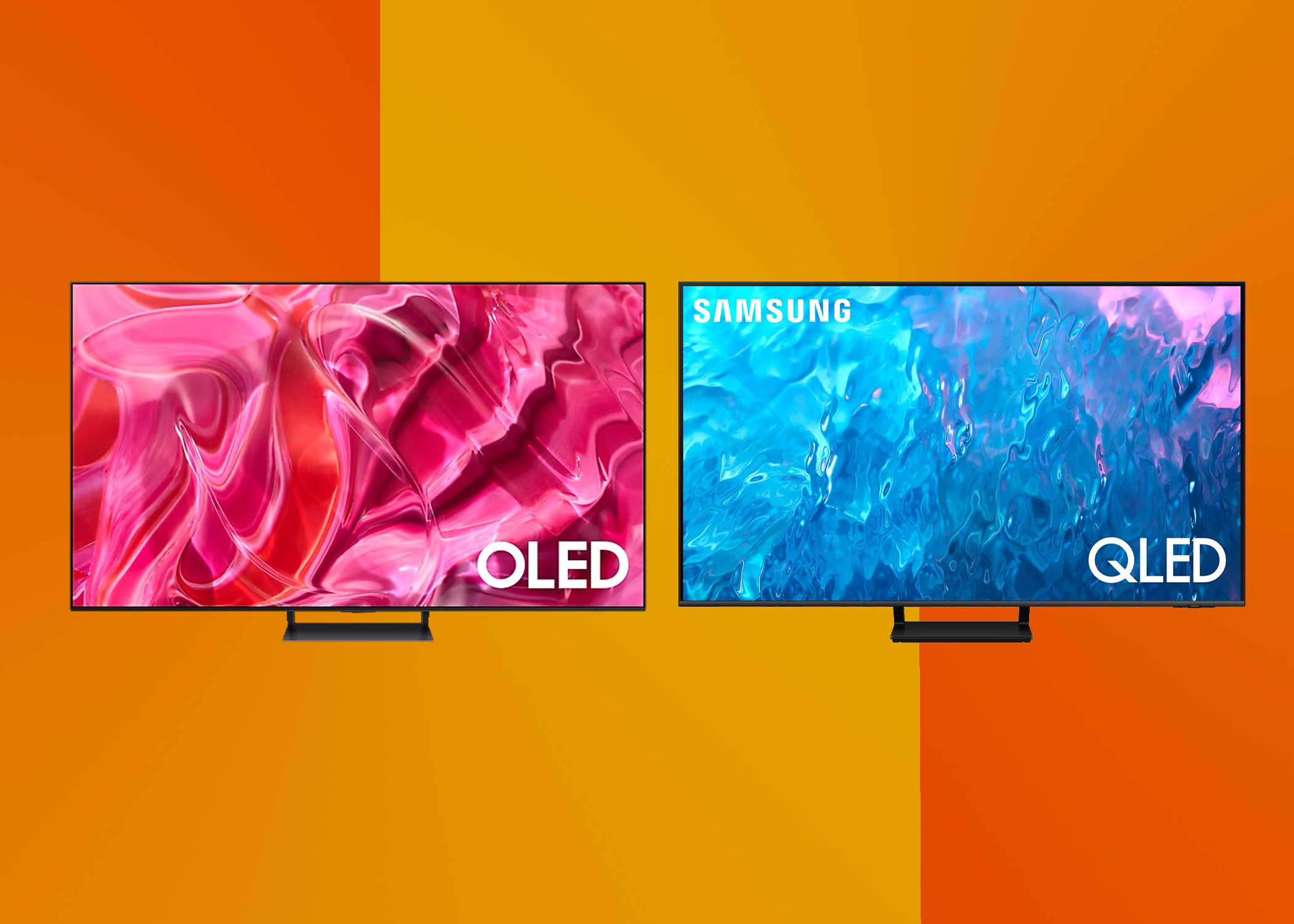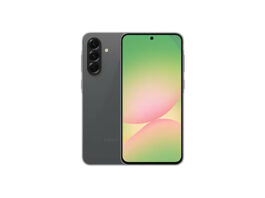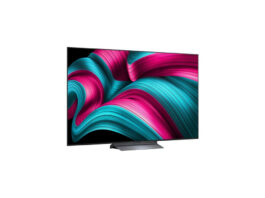OLED TVs
Best for: picture quality
Organic Light-Emitting Diode (OLED) displays currently reign supreme as top-tier TV technology. They boast superior viewing angles, deeper blacks (resulting in better High Dynamic Range (HDR) contrast), and lower power consumption. They excel particularly in gaming, albeit at a higher cost.
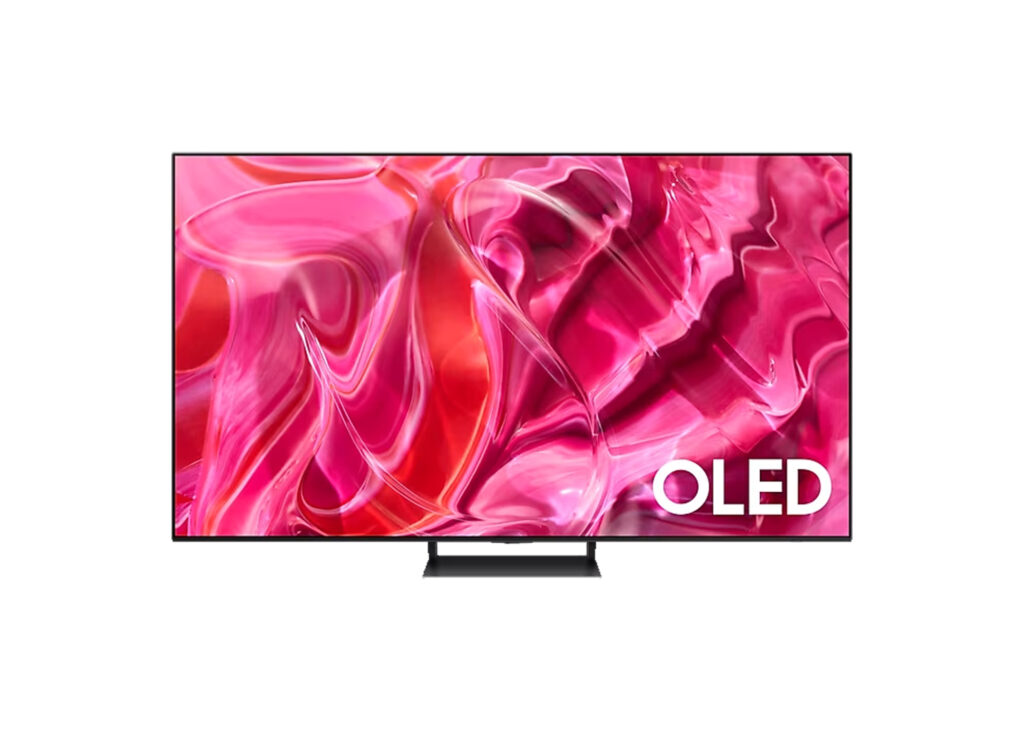
Advantages:
- Lighter and thinner build
- Precise color reproduction
- Deeper black tones enhance contrast
Disadvantages:
- Small risk of burn-in
- Limited full-screen brightness
- Higher price point
QLED TVs
Best for: value for money
Quantum Dot Light Emitting Diode (QLED) TV displays promise brighter pictures than OLED and generally come at a lower price point while offering comparable features. They deliver excellent value for money, although their contrast, black levels, and color accuracy may not match OLED standards.
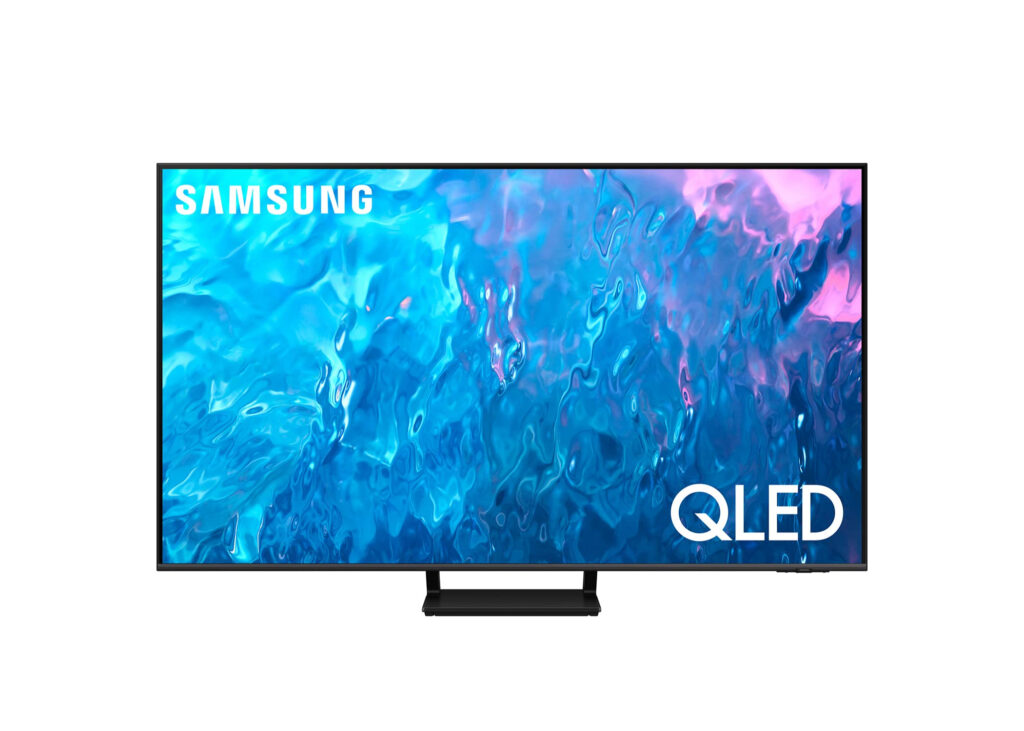
Advantages:
- Vivid color display
- Potential for high brightness
- More budget-friendly option
Disadvantages:
- Potential backlight blooming
- Inconsistent black tones
- The contrast is not as strong as OLED
OLED vs. QLED: Overview
While browsing for a new TV, you’ve likely encountered the terms OLED and QLED. Distinguishing between them can be challenging.
OLED typically provides a premium viewing experience due to its precise picture quality, but this may not always be the optimal choice. QLED TVs now offer superior brightness and value, retaining most features. The decision ultimately hinges on your viewing environment preferences.
Preferences for premium picture quality vary among individuals. Some favor OLED’s deep shadows, while others prefer QLED’s vibrant colors and brightness. If you’re unsure about these terms, keep reading.
For detailed insights, consult our guides on OLED and QLED technology. Alternatively, continue reading for simplified explanations to help you decide between the two.
Whether you seek an immersive cinema experience with one of the best 85-inch TVs, a gaming setup for PS5 or Xbox Series X, or a compact option like the best 40-inch TV for the bedroom, we’ll guide you toward the most suitable technology.
OLED vs QLED: TV Technology Comparison
OLED TVs
Major TV manufacturers such as LG, Panasonic, Philips, and Sony have been offering OLED TVs for years. OLED remains one of the top-tier TV technologies, widely considered the most premium option available. Even Samsung, previously against OLED, now produces QD-OLED TVs.
Among OLED TVs, LG maintains dominance, with popular models like the LG C3, LG G3, and LG B3, along with Sony’s A80L, standing out as some of the best options on the market.
QLED TVs
Primarily manufactured by Samsung, QLED TVs are also available from brands like Sony, Hisense, TCL, and Amazon. The Samsung Q80C stands out as a highly-rated example of QLED technology.
Mini-LED TVs
While technically distinct, mini-LED TVs utilize microscopic lenses within the backlight, often incorporating elements of QLED technology into their panels.
QD-OLED TVs
QD-OLED technology combines the benefits of OLED and QLED, featuring a blue OLED panel with a quantum dot filter for enhanced brightness and color accuracy. Introduced by Samsung in 2022, QD-OLED TVs have gained popularity and refinement.
OLED vs QLED: Choosing Organic LED
OLED Advantages and Disadvantages
| Pros: | Cons: |
|---|---|
| Self-emissive pixels | Limited full screen brightness (generally up to 300 nits) |
| More convincing black tones | Expensive compared to QLED |
| Accurate textures and colors |
To clarify, OLED stands for Organic Light Emitting Diode, utilizing a carbon-based film between two conductors to emit light when an electric current passes through.
With OLED, each pixel emits light, enabling complete blackouts for realistic blacks, striking contrast, and precise colors.
While OLED TVs have improved brightness with micro-lens-array (MLA) technology, achieving peak brightness levels exceeding 1,000 nits, full-screen brightness remains challenging.
Peak brightness measures impressively, but on 100% windows, OLED TVs often reach only 200-300 nits, compared to over 500 nits for QLED TVs like the Samsung Q80C.
Despite becoming more affordable, OLED remains notably pricier than QLED and even mini-LED options, reflecting its premium status.
QLED vs OLED: Quantum Dots in Focus
QLED Advantages and Disadvantages
| Pros: | Cons: |
|---|---|
| Vibrant colors | Backlight blooming can occur |
| Brighter than OLED (full screen) | Black uniformity issues due to LED backlight |
| Variety of screen sizes between 32- and 98-inch | Contrast not as strong as OLED |
QLED excels in higher brightness levels and a wide range of screen sizes, especially in premium models like the Samsung Q80C. But what exactly is QLED, short for quantum dot LED?
QLED utilizes a quantum dot color filter in front of its LCD backlight, enhancing brightness, contrast, and color vibrancy. Although technically a tweak to LCD TV technology rather than a next-gen display, it remains impressive.
Mini-LED TVs, which incorporate QLED technology, feature microscopic LEDs for improved lighting control and contrast compared to standard LED TVs. However, they are technically distinct panel types.
Despite its strengths, QLED struggles with black levels and contrast due to limitations of the LED backlight, leading to black uniformity issues and backlight blooming. While QLED offers good contrast, it can’t match OLED TVs in this aspect.
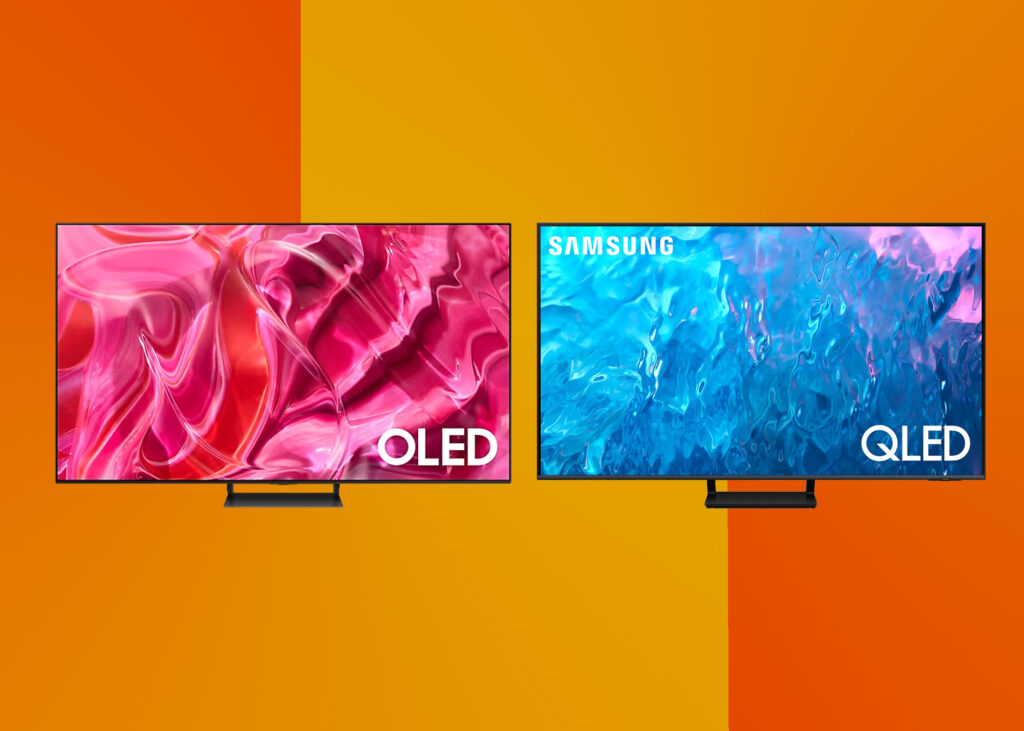
OLED vs QLED: The Best Gaming TV
When deciding on the ideal gaming TV, weighing OLED against QLED becomes crucial, especially considering your gaming setup’s location. However, the key factors to consider are specific gaming features tailored to optimize console performance.
Important features include HDMI 2.1 ports supporting 120Hz refresh rate (compatible with PS5 and Xbox Series X), VRR (incorporating AMD FreeSync and Nvidia G-Sync), and ALLM. Additionally, the number of HDMI 2.1 ports becomes significant, particularly if you own multiple next-gen consoles.
In recent years, the disparity in gaming features between OLED and QLED TVs has diminished. Initially, OLEDs boasted superior gaming performance alongside various features (excluding budget models like the LG A2) and exceptional OLED picture quality, making them the go-to gaming TVs.
However, certain QLED models, such as the Samsung Q80C, and mini-LED TVs like the Hisense U8K and Samsung QN90C, now offer comparable gaming features coupled with robust performance. The primary distinction lies in QLEDs’ brighter display.
Ultimately, the choice hinges on your gaming environment. Brightly lit rooms benefit from QLED or mini-LED technology, while darker spaces or those with minimal reflections may lean towards OLED.
OLED vs QLED: Making the Right Choice
Both OLED and QLED technologies boast impressive features, albeit for different reasons. OLED offers superior contrast due to its individually dimming pixels, while QLED excels in full-screen brightness. Both deliver stunning colors tailored to different preferences.
For environments with controlled lighting, OLED proves ideal. Its OLED panel ensures deep black levels and exceptional contrast, though it may suffer from reflections in well-lit rooms (note: Samsung’s 2024 QD-OLED, the Samsung S95D, introduces an OLED Glare Free screen to mitigate reflections).
Despite advancements in OLED brightness, QLED retains superiority in overall brightness. In well-lit spaces, QLED’s brighter panel handles reflections better and appeals to those who prefer vibrant colors.
Regarding features, both OLED and QLED TVs offer similar gaming connections, HDR formats (excluding Dolby Vision on Samsung sets), and compatibilities. Therefore, your choice ultimately depends on your viewing environment.
OLED vs QLED: A Glimpse into the Future
The future holds exciting developments for both OLED and QLED technologies, focusing on energy efficiency and brightness enhancements.
In the OLED realm, ink-jet printed (IJP) OLEDs are in development, promising brighter displays and potentially lower prices due to cheaper production methods.
Another advancement is Phosphorescent OLED (PHOLED), offering higher brightness and improved energy efficiency, reducing heat output compared to current OLED technology.
Traditional OLED TVs are also evolving, with potential 4,000 nits panels on the horizon, though initial targets hover around 3,000 nits for brands like LG and Samsung.
For QLED, the future revolves around direct-view quantum dot technology, where quantum dots serve as the light source, potentially enhancing black levels and contrast similar to OLED TVs.
OLED vs QLED: Final Thoughts
In the OLED vs QLED debate, OLED emerges as the superior technology. With self-emissive pixels, OLED delivers unparalleled picture accuracy, exceptional black levels, contrast, and overall sharpness.
However, QLED remains a formidable option with its increased brightness, vibrant colors, and more affordable pricing across a broader range of sizes (32- to 98-inch compared to OLED’s 42- to 97-inch).
Ultimately, the choice between OLED and QLED hinges on your room’s requirements. Regardless of your decision, rest assured there are excellent options available for both technologies.
Discover more from NewForTech
Subscribe to get the latest posts sent to your email.

